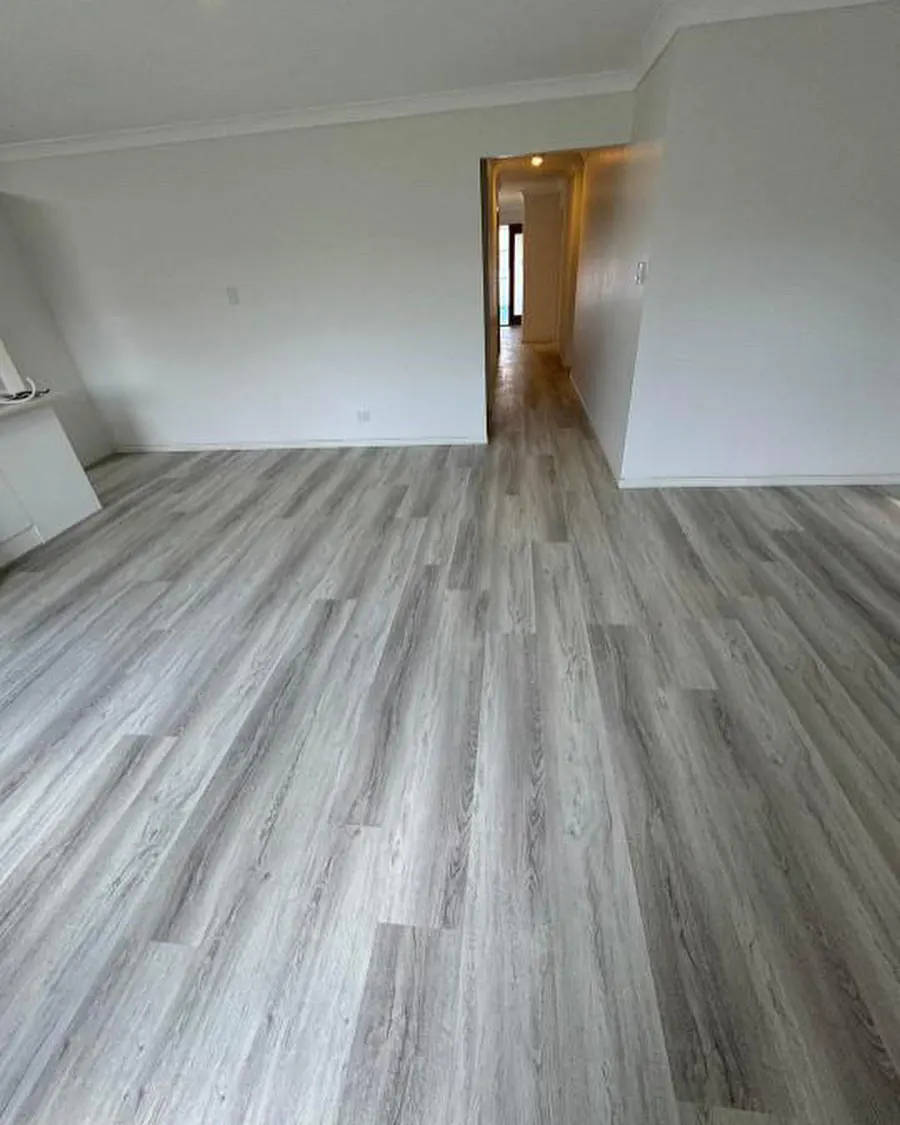
Australian retailers sell a comprehensive range of flooring, which can confuse and intimidate homeowners. As trusted hybrid flooring Sydney experts, we encourage buyers to thoroughly understand each type to ensure you purchase the appropriate surface for your indoor space. Whether constructing or renovating, savvy, confident people will get a long-term return on their investment.
It isn’t unusual for homeowners to whittle down their flooring choices to two or three and remain confused about which one best suits their homes. Comparing and contrasting their various aspects can be time-consuming and tedious. From experience, we noticed homeowners who don’t select solid timber flooring to gravitate towards either the laminate or hybrid versions.
This blog will explain the basics of laminate and hybrid floorings to help Australians choose the best surface type for their homes.
What Is Hybrid Flooring?
Hybrid flooring is composite flooring that combines the strengths of laminate and luxury vinyl flooring. Manufacturers design them to mimic natural components such as hardwood or stone while being resilient, waterproof, and low-maintenance. Hybrid flooring’s versatility and durability have appealed to many Australian homeowners.
Hybrid flooring’s four layers include the following:
- Wear layer: This is a clear, protective layer that shields the structure from fading, stains, and scratches.
- Decorative layer: This is a high-definition print that resembles stone, wood, or other natural components.
- Core layer: This hard, robust layer is made of either stone-plastic composite (SPC) or wood-plastic composite (WPC) that stabilises the structure, resists moisture, and ensures longevity.
- Backing layer: This underlayment helps reduce noise and increase comfort underfoot.
What Are The Advantages of Hybrid Flooring?
Here are the pros of hybrid flooring:
- Low maintenance: Hybrid floors don’t require frequent sealing or polishing. Instead, regular sweeping, vacuuming, or mopping will suffice.
- Waterproof: Excess moisture can compromise your floor’s structural integrity. Fortunately, hybrid floors’ waterproof surfaces protect the bottom layers from spills or water-related mishaps.
- Durable: Hybrid flooring’s resistance to scratches, dents, and stains makes it perfect for high-traffic indoor spaces.
- Easy assembly: Homeowners require minimal equipment and no adhesives to install hybrid flooring, with a reliable click-lock system that easily secures the structure.
- Climate resistance: Hybrid flooring’s multi-layered orientation helps resist Australia’s harsh summers and temperature fluctuations. Its unique construction also prevents expansion or shrinkage, which happens to other flooring types.
What Are The Disadvantages of Hybrid Flooring?
The cons of hybrid flooring include the following:
- Expensive: Hybrid flooring is more expensive than the laminate version and other floor types. The manufacturing costs and material quality of hybrid flooring are significant factors that affect their price.
- Limited repair alternatives: Homeowners cannot sand or refinish hybrid flooring. Unfortunately, deep scratches and extensive damage usually require complete floor replacement—a more expensive and time-consuming strategy than refinishing solid hardwood flooring. Although we understand accidents happen, please take the necessary precautions to ensure your hybrid flooring’s longevity.
- Environmental factors: Some hybrid flooring types may contain synthetic components that affect the environment. We encourage homeowners to research their options and purchase eco-friendly hybrid floors thoroughly.
What Is Laminate Flooring?
Laminate flooring is a multi-layered structure made of wood fibre that mimics its natural version.
Laminate floors have four layers, including the following:
- Transparent surface: This is the topmost layer that protects the surface from daily wear and tear in high-traffic areas. Its robust, hard-sealed surface also helps prevent staining and ensure longevity.
- Decorative layer: As the term implies, this layer contains an image with various colours and patterns that enhance your indoor aesthetics.
- Core board: Manufacturers use high-density fibreboard to create this layer, which is 80% wood that improves the flooring’s structural integrity.
- Bottom layer: This layer protects the core board from moisture and stabilises the entire flooring.
What Are The Advantages of Laminate Flooring?
The pros of laminate flooring include the following:
- Affordable: Laminate flooring is cheaper than its hybrid counterpart, offering homeowners a stylish, cost-effective alternative to hardwood floors.
- Robust: Laminate floors’ sturdy surface protects the structure from scratches, dents, stains, and fading.
- Low-maintenance: Laminate floorings’ tightly-sealed surfaces, stain-resistant overlays, and secure locking mechanisms repel dust, dirt, and germs, resulting in easy maintenance and sanitation. Homeowners will enjoy a stunning, healthy environment for their long-term peace of mind and comfort.
- Easy installation: Whether installing by plank, row, or tapping, laminate floors’ convenient locking mechanisms offer users easy, smooth assembly, helping save time and enhance convenience.
What Are The Disadvantages of Laminate Flooring?
The cons of laminate flooring include the following:
- Inauthentic appearance: Laminate floorings’ aesthetics hinge on the decorative layer’s image quality. A substandard photo results in an inauthentic look that mimics genuine wood.
- No refinishing: Since laminate is significantly thinner than real wood, users cannot sand it down and refinish it if the top layer is damaged.
- Prone to water damage: Laminate floorings are susceptible to water damage because moisture can make their wood components expand and contract. Therefore, it’s imperative to wipe spills immediately and avoid using harsh chemicals to preserve the top layer’s integrity and durability.
- Repair issues: Unlike hybrid flooring which usually entails complete restoration, the laminate version doesn’t require an overhaul if one plank sustains minimal surface damage. Homeowners can replace the plank and make the floor look as good as new.
However, a severely damaged plank may require users to replace the entire flooring, which takes time and compromises their budgets.
Comparison Points
When deciding between hybrid or laminate flooring, we recommend comparing the following facets:
- Their overall quality.
- Ease of installation, cleaning, and repair.
- Various styles, colours, and options.
- The flooring’s overall feel and appeal.
- Waterproofing capabilities.
- Resistance to dents, scratches, and dust.
Similarities And Differences
At Ezy Decking, we want customers to get their money’s worth and enjoy the long-term benefits of their preferred flooring. Here are the similarities and differences between hybrid and decking floors to help homeowners make informed, sound decisions:
Similarities
- Hybrid and laminate floorings have resilient qualities that help them endure over time.
- Both floor types feature easy click-and-lock mechanisms that facilitate easy assembly.
- Homeowners can choose a comprehensive range of hybrid and laminate floor colours and styles to spruce up their indoor living spaces.
Differences
- Hybrid flooring is completely waterproof. Excess moisture can expand and contract laminate floors, making them susceptible to water damage.
- Hybrid flooring is easier to clean than its laminate counterpart.
- Hybrid floors have a soft surface feel while the laminate version has a harder one.
- Laminate floors are more affordable than hybrid flooring.
Our Most Popular Herringbone Hybrid Flooring Styles
Be sure to view the most popular herringbone hybrid flooring styles among our customers:
- Natural Oak Herringbone Hybrid Flooring
- Blackbutt Herringbone Hybrid Flooring
- Hamptons White Herringbone Hybrid Flooring
Conclusion
Choosing between hybrid and laminate flooring isn’t about which version is better. Rather, the floor type that suits your unique needs, lifestyle, and circumstances over time is the one you should choose.
Please contact us today to discuss your flooring requirements. Ezy Decking’s trusted, reliable hybrid flooring Brisbane experts can help decide the appropriate flooring for your situation. Our staff will schedule an on-site inspection and design an upfront, customised estimate for your need and budget.





